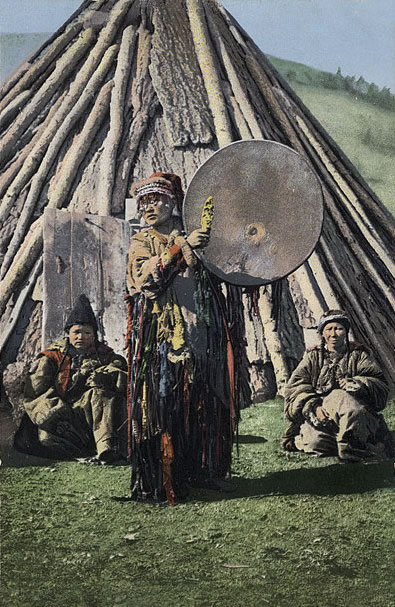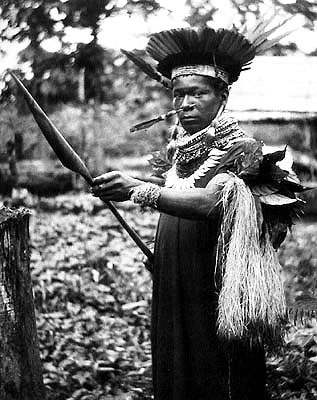Plants, Shamans, and the Spirit World

Throughout human history and perhaps even before Homo sapiens evolved, there has been an innate desire to experience a direct connection with god(s), ancestors, and other inhabitants of the spirit world. When examining some of the most ancient cultures across Africa, Europe, Asia, Australia, and the Americas and up through time to the preindustrial age we observe many clans, sects, and tribes partaking of psychoactive and other plants for spiritual and/or medicinal uses. The uses and curative effect of these plants were strongly interconnected with ritual. For many tribal cultures, the plants in and of themselves were sacred. Supernatural powers resided in their tissues as a divine gift to humans on earth.
In many cultures the men and women that served as tribal healers, shamans, medicine men or women, had a deep understanding of the use of these plants singularly and/or in combination. These “herbalists” served as spiritual guides and dream interpreters and led many sacred ceremonies where the use of psychoactive plants played an integral role in burial rituals, rites of passage, healing rituals, vision quests and purification rituals.
Using psychoactive plants, shamans had the power to enter trances, combat evil spirits and disease, communicate with ancestors, prevent famine, and control weather (rain dances). Within the plant-induced visions and trances, the shaman was able to comprehend the spirit world and the real world and maintain balance between the two. Prayers were offered to the spirits to whom these holy plants belonged. Indeed, for some, the plant itself was god or provided a way to god.
 In many societies, healers or shamans function as intermediaries between the physical and spiritual world. Illness is thought to be caused by a loss of the soul from the body and the shaman’s role is enter that world and retrieve it so body and soul are whole again. The use of “spirit guides”, powerful plants or totemic animals assists the shaman in the spirit world. This image from 1906 is of a Tlingit Healer. Photo credit: National Anthropological Archives.
In many societies, healers or shamans function as intermediaries between the physical and spiritual world. Illness is thought to be caused by a loss of the soul from the body and the shaman’s role is enter that world and retrieve it so body and soul are whole again. The use of “spirit guides”, powerful plants or totemic animals assists the shaman in the spirit world. This image from 1906 is of a Tlingit Healer. Photo credit: National Anthropological Archives.
The use of psychoactive plants and fungi allowed for entry into the spirit world. Stephen Buhner in his book Sacred Plant Medicine offers that it is within the human subconscious where mind-altering substances provide a gateway to the spirit world, the realm of the sacred. The subconscious informs the conscious that our experiences within the spirit world are indeed real. It has been the shaman, the healer, the priestess, the mystic, or the religious leader that helps the travelers understand their journeys and experiences within the spirit world.
Today’s modern societies and state authorities have eliminated or made illegal the use of most psychoactive plants except for prescribed medicinal use or in rare cases for religious use (such as peyote by the Native American Church). Although psychoactive plants are still utilized today, in many cases, their sacred, ritualistic use has been transformed to profane recreational use or substance abuse. Regardless, many psychoactive plants have continued to maintain a place in modern secular and religious societies around the world. Unfortunately, the knowledge of their historical uses and meanings have been lost to the ages for the vast majority of people in today’s modern urban societies.
"Our capacity to recognize and seek out the sacred is one of the basic drives that make up the fabric of a human being… One must enter the realm of the sacred and experience its transcendent nature to fully understand it… It is this reality, that when experienced, is felt to be the REAL, a deeper and more meaningful reality than that we experience in our normal day-to-day lives."
~Stephen Harrod Buhner
 Female shaman with drum from Altai region of Siberia. The drum, often assisted by psychoactive fly agaric mushrooms, summoned the shaman’s spiritual helpers, sheltered the souls of a sick person, and defended the shaman against malevolent spirits.
Female shaman with drum from Altai region of Siberia. The drum, often assisted by psychoactive fly agaric mushrooms, summoned the shaman’s spiritual helpers, sheltered the souls of a sick person, and defended the shaman against malevolent spirits.
 Tungus shaman of Russia. The drum is the exclusive property and source of individual power for a shaman. Without it, he cannot perform his duties nor contact the spirit world. Photo: American Museum of Natural History.
Tungus shaman of Russia. The drum is the exclusive property and source of individual power for a shaman. Without it, he cannot perform his duties nor contact the spirit world. Photo: American Museum of Natural History.
 Amazonian shamans have knowledge of and access to many powerful psychoactive plants. Photo: American Academy of Achievement.
Amazonian shamans have knowledge of and access to many powerful psychoactive plants. Photo: American Academy of Achievement.



